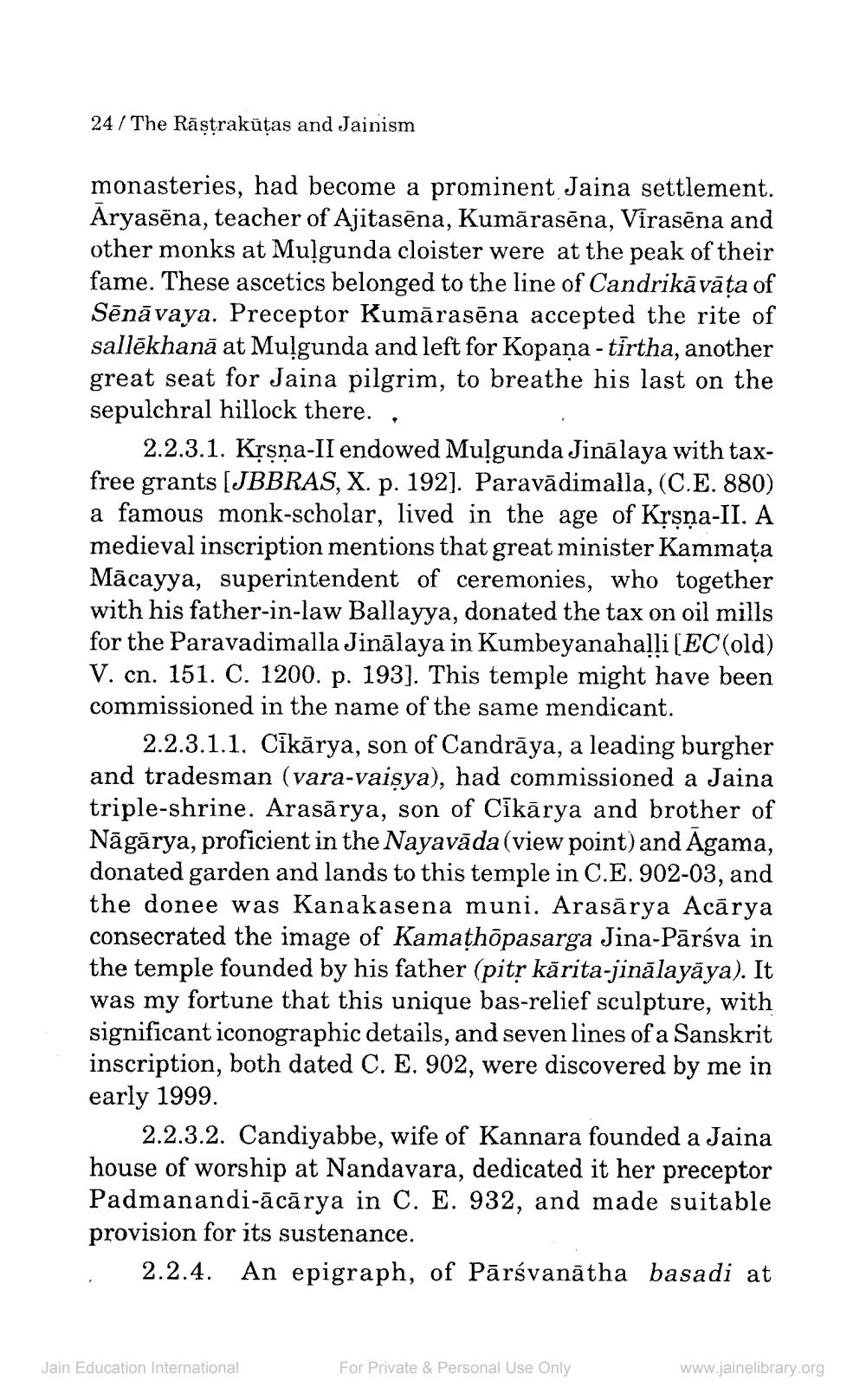________________
24 / The Râştrakūtas and Jainism
monasteries, had become a prominent Jaina settlement. Aryasēna, teacher of Ajitasēna, Kumārasēna, Virasēna and other monks at Mulgunda cloister were at the peak of their fame. These ascetics belonged to the line of Candrikāvāta of Sēnā vaya. Preceptor Kumārasēna accepted the rite of sallēkhan) at Mułgunda and left for Kopaņa- tirtha, another great seat for Jaina pilgrim, to breathe his last on the sepulchral hillock there. ,
2.2.3.1. Krsņa-II endowed Mulgunda Jinālaya with taxfree grants (JBBRAS, X. p. 192]. Paravādimalla, (C.E. 880) a famous monk-scholar, lived in the age of Krsna-II. A medieval inscription mentions that great minister Kammața Mācayya, superintendent of ceremonies, who together with his father-in-law Ballayya, donated the tax on oil mills for the Paravadimalla Jinālaya in Kumbeyanahalli (EC(old) V. cn. 151. C. 1200. p. 193]. This temple might have been commissioned in the name of the same mendicant.
2.2.3.1.1. Cīkārya, son of Candrāya, a leading burgher and tradesman (vara-vaisya), had commissioned a Jaina triple-shrine. Arasārya, son of Cīkārya and brother of Nāgārya, proficient in the Nayavāda(view point) and Agama, donated garden and lands to this temple in C.E. 902-03, and the donee was Kanakasena muni. Arasārya Acārya consecrated the image of Kamathôpasarga Jina-Pārsva in the temple founded by his father (pitr kārita-jinālayāya). It was my fortune that this unique bas-relief sculpture, with significant iconographic details, and seven lines of a Sanskrit inscription, both dated C. E. 902, were discovered by me in early 1999.
2.2.3.2. Candiyabbe, wife of Kannara founded a Jaina house of worship at Nandavara, dedicated it her preceptor Padmanandi-ācārya in C. E. 932, and made suitable provision for its sustenance. . 2.2.4. An epigraph, of Pārsvanātha basadi at
o
Jain Education International
For Private & Personal Use Only
www.jainelibrary.org




